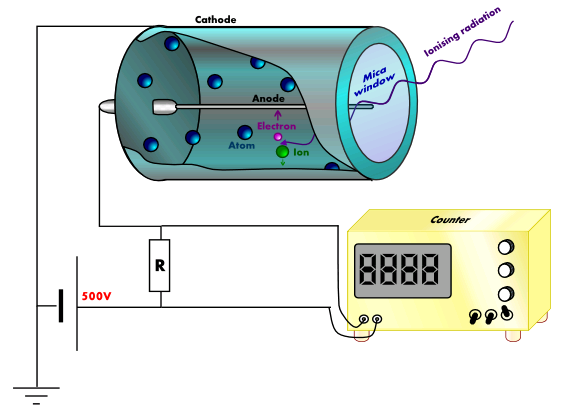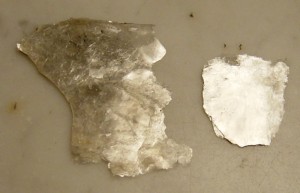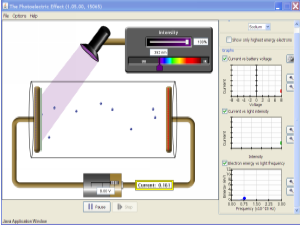Here are the answers to the waves & radiation questions.
Nat5 waves & radiation exam questions
I’ve put together a collection of exam questions from old standard grade and intermediate 2 papers that fit the national 5 curriculum. Try these before moving on to past papers and check your answers using the solutions that I will post next. No cheating!
half-life calculations
I’ve attached a short guide to half-life calculations. There are some questions after each worked example, answers are at the end of the sheet.
the geiger-muller tube
We’ve examined the operation of a Geiger-Müller counter as part of the radiation topic.
 image by Theresa Knott
image by Theresa Knott
The Geiger-Müller (GM) counter is used to detect ionising radiation such as alpha and beta particles or gamma rays. The radiation enters through a very thin window at one end of the tube. This window is usually made of mica.
 Mica flakes. Photo by Rpervinking
Mica flakes. Photo by Rpervinking
Mica is a mineral that forms in layers called sheets. These sheets can be split apart into very thin layers, so thin that even an alpha particle can pass through it (remember that alpha particles can be stopped by something as thin as your skin or a sheet of paper). The mica window prevents the argon inside the tube from escaping and also stops air from getting into the tube.
When radiation enters the tube and collides with an argon atom, an electron may be knocked off the atom – we call this process ionisation. When ionisation occurs, a positively-charged argon ion and a negatively-charged electron are produced. The argon ion is attracted to the outside wall of the tube, which is connected to the negative terminal of the power supply, while the electron is attracted to the central electrode, which is kept at a high positive voltage – typically 500V.
A small pulse of current is produced each time an electron reaches the central electrode. These pulses can be counted by an electronic circuit and a displayed on a 7-segment display. Sometimes a small speaker is added to the system to produce a click for each pulse. On its own, the GM tube cannot tell the difference between alpha, beta and gamma radiation. We need to place different materials (e.g. paper, aluminium, lead) in front of the mica window to discover which type of radiation is responsible for the reading.
Here is a short video demonstrating the use of a Geiger-Müller tube.
referencing guide for AH project report
You should be thinking about getting some of your project report finished so there is less to do when the deadline approaches. You can start writing up your underlying physics section and sort out the references you will include at the end of the report. I’ve attached a guide on referencing in the Vancouver style. Get back to me if you have any questions.
Thanks to Imperial College London for producing this booklet.
electricity & energy solutions
Here are the solutions to the Electricity & Energy questions. Mark allocations are highlighted in red.
electricity and energy revision questions
Here are questions from Standard Grade and Intermediate 2 that are appropriate revision for the electricity and energy unit of national 5. Answers to follow.
dynamics & space answers
Here are the solutions to the dynamics & space questions. I have adjusted the marking instructions to reflect the way national 5 is marked.
dynamics & space revision questions
Here are the revision questions for dynamics and space. They are taken from old standard grade and intermedite 2 past papers. I have adjusted the marks to fit national 5.
school closure work for Higher class
We’ve been looking at the photoelectric effect this week. In this video, Professor Dave reviews some of the points we covered in class.
Click on the picture below to download a simulation to investigate the effect of irradiance on frequency on photocurrent. You’ll be prompted to install Java if you don’t have it already.
Once the animation is running, you can;
- change the metal under investigation (we used zinc in class)
- vary the wavelength of the incident light
- vary the irradiance of the incident light.
Notice that below the theshold frequency you can’t get any photoelectrons, even if you set the light to its brightest setting.
Compare your results to the graphs provided in your notes.
I have attached some notes & questions on the photoelectric effect. Click on the link below to download a copy.


